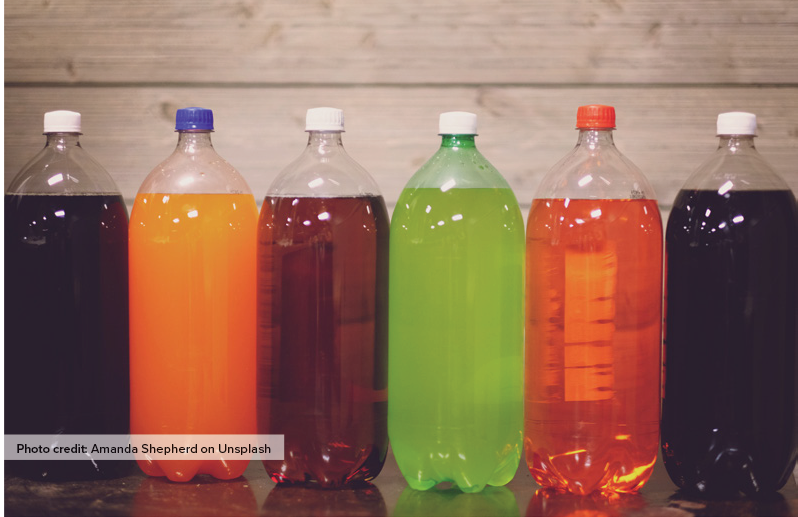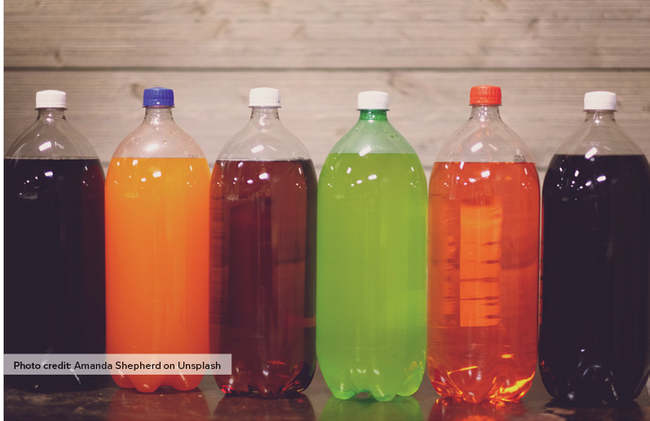Are California soda taxes effective?
"California's soda taxes in Bay Area communities have generally had little impact on sales of sugar-sweetened beverages," said a co-author of the study.
Study finds taxes increase revenue, but don't necessarily decrease sales
California has four of the eight active soft drink taxes in the United States, but are these policies successful in reducing the consumption of sugary drinks in these cities? New research from UC Davis suggests that, in most cases, these soft drink taxes have not reduced retail sales. Moreover, although they have been successful in raising revenue to fund programs aimed at reducing the consumption of sugary drinks and mitigating their negative health effects, a disproportionate share of this revenue has been generated by low-income households. .
With more than $2 trillion in annual global health care spending resulting from the obesity epidemic, many municipalities are looking for ways to reduce its damaging effects on their citizens and economies. The World Health Organization (WHO) recommends a tax on sugary drinks (eg, sodas) to reduce consumption of sugary drinks and prevent diseases associated with obesity. To assess whether this approach has worked locally in California, UC Davis economists analyzed the price and sales effects of a one-cent-per-fluid-ounce sales tax on sugar-sweetened beverage taxes. in three Bay Area cities: Berkeley, Oakland and San Francisco.
Study co-author Richard Sexton, a distinguished professor in the Department of Agricultural and Resource Economics at the University of California, Davis, said he found that "California taxes on sodas in communities from the Bay Area have generally had little impact on sugary drink sales.”
There are a number of reasons why these taxes do not significantly affect the purchasing decisions of California consumers. Since taxes are imposed on distributors, an important consideration is how much of the tax is actually passed on to consumers. Several factors could cause very little of the final tax burden to fall on consumers, including fixed-price contracts between distributors and retailers, and the reluctance of retailers to pass on price increases to avoid alienating consumers.
When the authors studied this "transmission rate", they found that, in most cases, it was quite low. However, in the fourth and fifth years after the implementation of the Berkeley tax (home of the first US soda tax), they found pass-through rates of 45% and 77%, respectively, as well as significant reductions in retail sales on average. This may mean that it takes longer for these taxes to be passed on and affect behavior. Or, it may have been influenced by the implementation of similar taxes in surrounding areas a few years later, suggesting that these taxes are more effective when implemented over a wider area to prevent customers from make their purchases outside the taxed region.
Because low-income households consume more sugar-sweetened beverages than high-income households, they are often considered to be at greater risk from the adverse effects of high soda consumption. Thus, the authors also wanted to assess whether there was a difference in how these taxes affected the price and volume of sales in low-, middle-, and high-income neighborhoods.
Kristin Kiesel, who is also co-director of the Diversity and Inclusion in Research, Education, and Career Training (DIRECT) program, noted that "California's soft drink taxes appear to hit low-income consumers the hardest. There is little evidence that low-income households have reduced their purchases of sugar-sweetened beverages in response to these taxes, meaning they bear the burden of the portion of the tax passed on to retail without reaping the benefits. for health."
To learn more about the impact of sugary drink taxes on California consumers, read the full article "How Do California's Sugary Drink Taxes Work?" by Lang, Kiesel, and Sexton, published by UC Giannini Foundation of Agricultural Economics in ARE Update 26(3): 1–4, free online at https://giannini.ucop.edu/filer/ file /1676490133/20606.
ARE Update is a bimonthly magazine published by the Giannini Foundation for Agricultural Economics to inform policymakers and agribusiness professionals about new research or analysis on important topics in agricultural and resource economics. The articles are written by members of the Giannini Foundation, in particular...


"California's soda taxes in Bay Area communities have generally had little impact on sales of sugar-sweetened beverages," said a co-author of the study.
Study finds taxes increase revenue, but don't necessarily decrease sales
California has four of the eight active soft drink taxes in the United States, but are these policies successful in reducing the consumption of sugary drinks in these cities? New research from UC Davis suggests that, in most cases, these soft drink taxes have not reduced retail sales. Moreover, although they have been successful in raising revenue to fund programs aimed at reducing the consumption of sugary drinks and mitigating their negative health effects, a disproportionate share of this revenue has been generated by low-income households. .
With more than $2 trillion in annual global health care spending resulting from the obesity epidemic, many municipalities are looking for ways to reduce its damaging effects on their citizens and economies. The World Health Organization (WHO) recommends a tax on sugary drinks (eg, sodas) to reduce consumption of sugary drinks and prevent diseases associated with obesity. To assess whether this approach has worked locally in California, UC Davis economists analyzed the price and sales effects of a one-cent-per-fluid-ounce sales tax on sugar-sweetened beverage taxes. in three Bay Area cities: Berkeley, Oakland and San Francisco.
Study co-author Richard Sexton, a distinguished professor in the Department of Agricultural and Resource Economics at the University of California, Davis, said he found that "California taxes on sodas in communities from the Bay Area have generally had little impact on sugary drink sales.”
There are a number of reasons why these taxes do not significantly affect the purchasing decisions of California consumers. Since taxes are imposed on distributors, an important consideration is how much of the tax is actually passed on to consumers. Several factors could cause very little of the final tax burden to fall on consumers, including fixed-price contracts between distributors and retailers, and the reluctance of retailers to pass on price increases to avoid alienating consumers.
When the authors studied this "transmission rate", they found that, in most cases, it was quite low. However, in the fourth and fifth years after the implementation of the Berkeley tax (home of the first US soda tax), they found pass-through rates of 45% and 77%, respectively, as well as significant reductions in retail sales on average. This may mean that it takes longer for these taxes to be passed on and affect behavior. Or, it may have been influenced by the implementation of similar taxes in surrounding areas a few years later, suggesting that these taxes are more effective when implemented over a wider area to prevent customers from make their purchases outside the taxed region.
Because low-income households consume more sugar-sweetened beverages than high-income households, they are often considered to be at greater risk from the adverse effects of high soda consumption. Thus, the authors also wanted to assess whether there was a difference in how these taxes affected the price and volume of sales in low-, middle-, and high-income neighborhoods.
Kristin Kiesel, who is also co-director of the Diversity and Inclusion in Research, Education, and Career Training (DIRECT) program, noted that "California's soft drink taxes appear to hit low-income consumers the hardest. There is little evidence that low-income households have reduced their purchases of sugar-sweetened beverages in response to these taxes, meaning they bear the burden of the portion of the tax passed on to retail without reaping the benefits. for health."
To learn more about the impact of sugary drink taxes on California consumers, read the full article "How Do California's Sugary Drink Taxes Work?" by Lang, Kiesel, and Sexton, published by UC Giannini Foundation of Agricultural Economics in ARE Update 26(3): 1–4, free online at https://giannini.ucop.edu/filer/ file /1676490133/20606.
ARE Update is a bimonthly magazine published by the Giannini Foundation for Agricultural Economics to inform policymakers and agribusiness professionals about new research or analysis on important topics in agricultural and resource economics. The articles are written by members of the Giannini Foundation, in particular...
What's Your Reaction?














![Three of ID's top PR executives quit ad firm Powerhouse [EXCLUSIVE]](https://variety.com/wp-content/uploads/2023/02/ID-PR-Logo.jpg?#)







